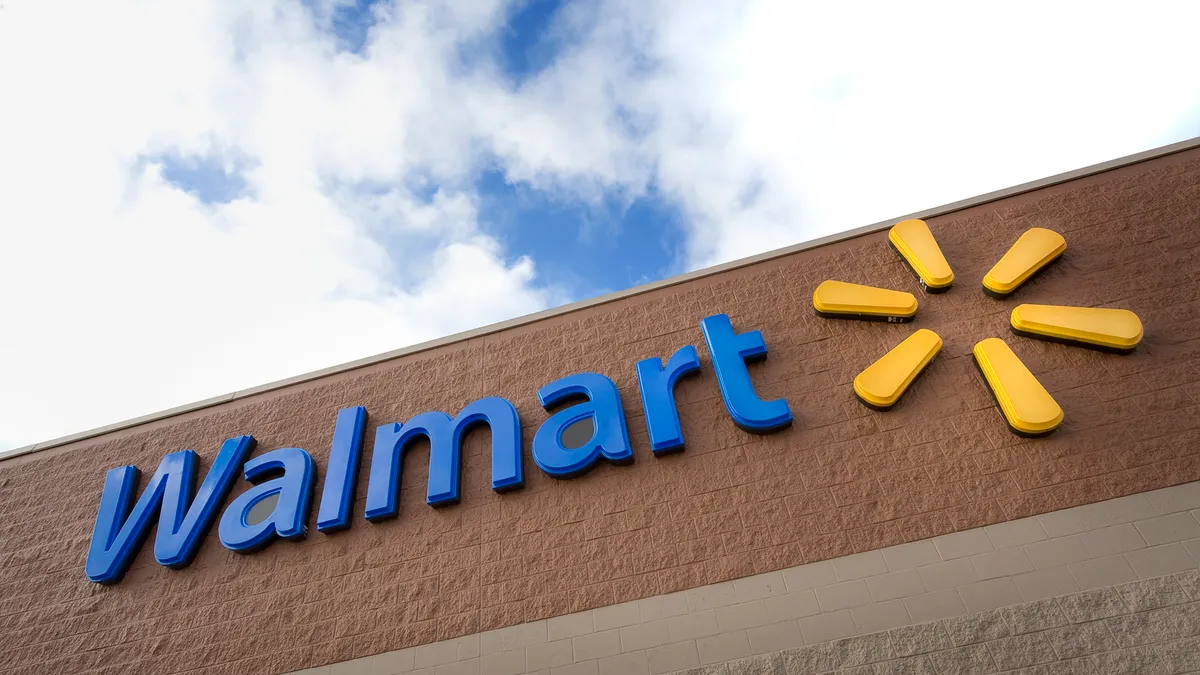Dive Brief:
-
Walmart is expanding its Mobile Express Scan & Go app to 100 additional stores this month, the retailer announced in a blog post. With the app, customers can skip the register and instead scan and bag items and pay for them directly using a mobile phone.
-
The expansion brings the test program, which has also rolled out across Sam's Club stores, to 125 Walmart stores in 33 states. The app is available for Android and iOS devices. Additional handheld devices will be available at Scan & Go kiosks at some Walmart locations so customers can try the service before downloading onto their phones.
- Walmart isn’t the only retailer streamlining the checkout process. Kroger is rolling out its own Scan, Bag and Go program to 400 locations this year, and Amazon has had similar plans in the works for years, Business Insider noted.
Dive Insight:
"We love waiting in long checkout lines," said nobody ever. Walmart is listening. With the expansion of its Mobile Express Scan & Go app, the retailer is making it easier for consumers to make their purchases and leave. This is important at a time when grocery shopping is steadily moving online, where a few clicks are all it takes to complete a transaction.
Even as customers may appreciate the time savings, Walmart is fully aware that it's not the only retailer rolling out this technology. Kroger is also rolling out its "Scan, Bag and Go" service to around 15% of its stores this year, and Amazon is working on technology for a cashier-free store in Seattle (though the public opening has been long delayed). Other retailers, like Hy-Vee and Aldi are also looking at processes that can decrease time at the checkout line.
This is Walmart’s second go-round with Scan & Go. The retailer introduced it in 2014, but customers had difficulty understanding how to use the app, and Walmart pulled the plug. But with the successful roll out of the mobile checkout at all Sam’s Club stores last year, Walmart feels ready to try again.
Consumers seem to love everything mobile, and 77% of Americans have a smartphone. This includes 75% of adults 50-64 years old and 42% of adults 65 and older. In addition, Pew Research says that lower income Americans and adults 50 and older are increasing ownership of mobile phones, so much of Walmart’s customer base seems to be comfortable with mobile technology.
But mobile shopping has a few hiccups of its own. Shopping cart abandonment is greater through mobile apps than on desktops. One study indicated that only 27% of purchases initiated from mobile devices were finalized. However, since customers will already be brick and mortar stores as they shop, this problem may be mitigated as customers put merchandise into an actual shopping cart. Research also indicates that abandonment decreases when shoppers enjoy the purchasing experience — an incentive for Walmart to keep improving its app.
Shrink is another factor for Walmart to consider, as more customers self-checkout. A study cited in the New York Times found using self-service lanes and smartphones for purchases created a loss of almost 4%, which is more than twice the average. Although Walmart customers will show their digital receipts to an associate upon leaving the store, it will be nearly impossible to compare a receipt with a cart full of purchases quickly, and not create the slowdown the technology was intended to eliminate.








